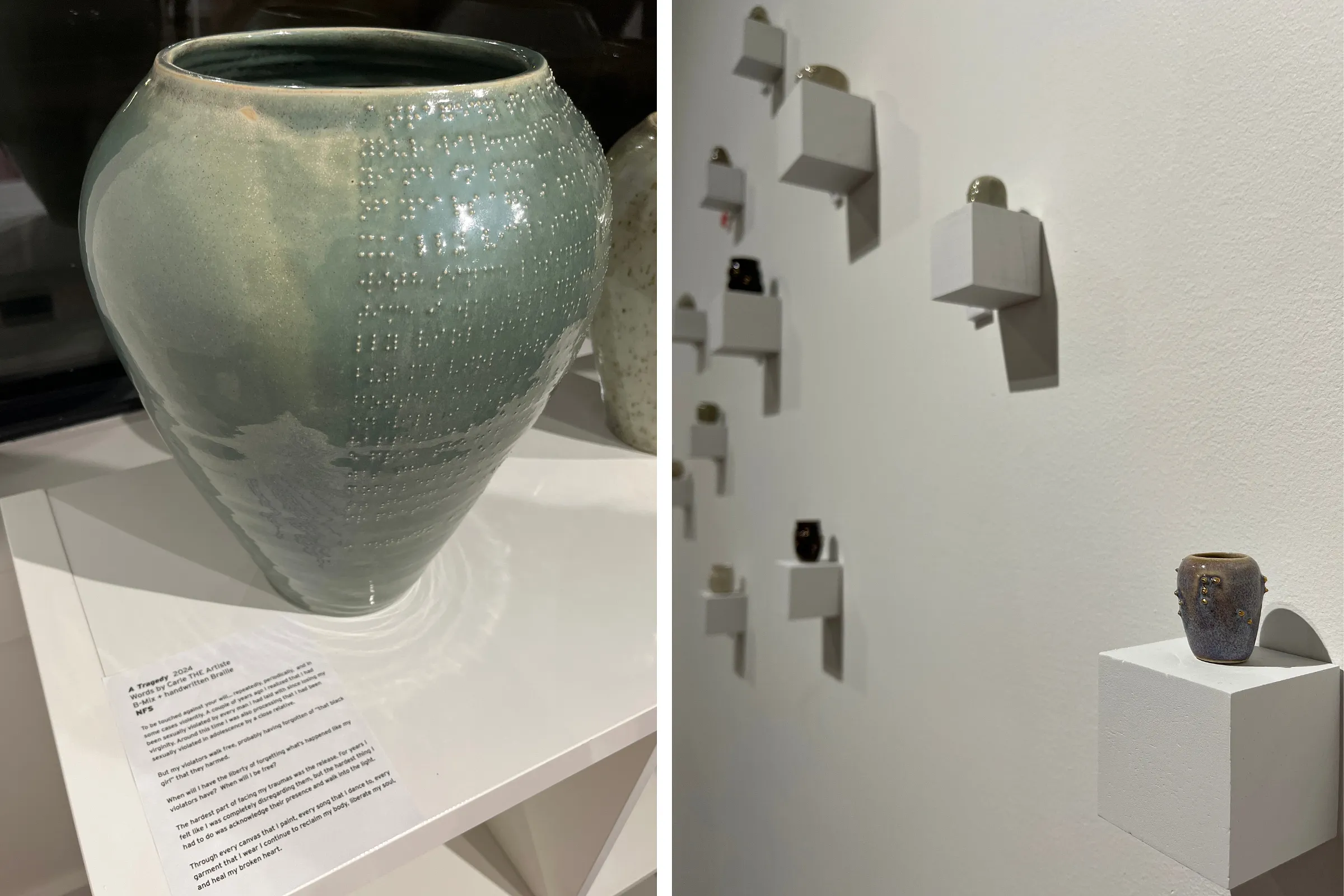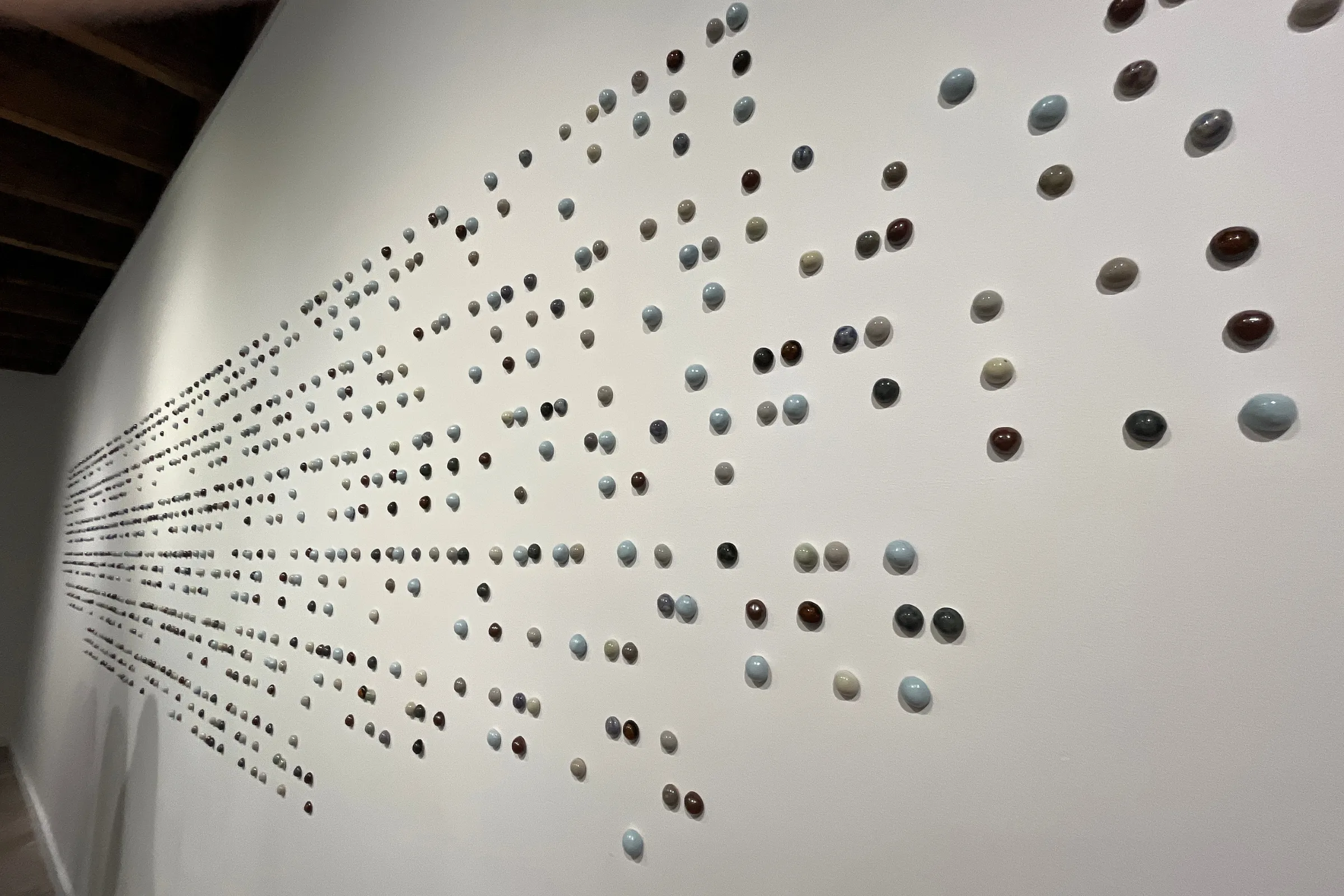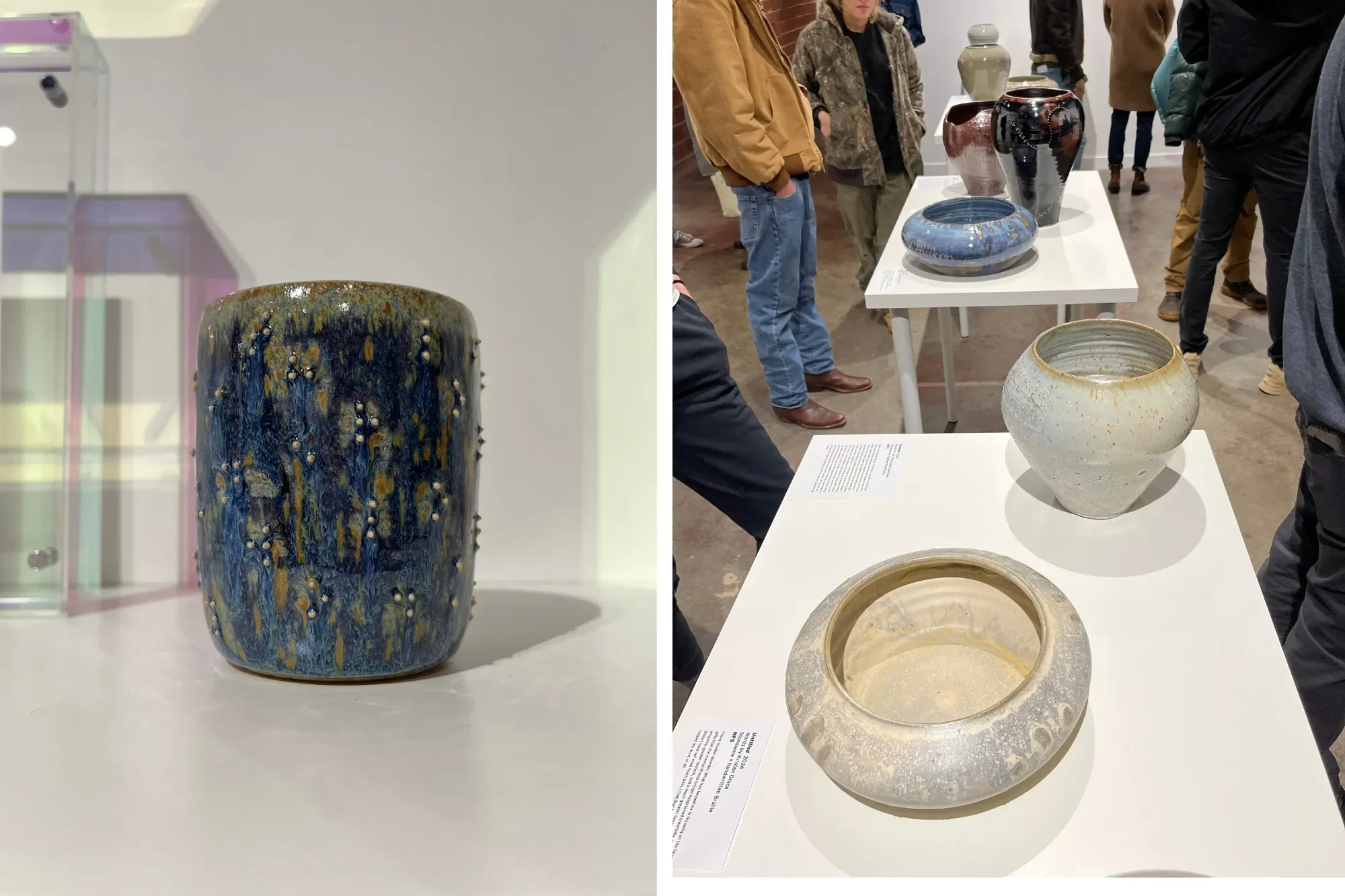Invisible Voices
Positive Space Tulsa
Tulsa
Through Jan. 27
Not many things around here move me as much as a packed house at an art show opening. When the community shows up for an artist, it’s not just friends being supportive (even in a city where everybody’s about three degrees of separation from everybody else). It’s a statement of trust in that artist’s vision. In the case of Invisible Voices, the current exhibit at Positive Space Tulsa by ceramicist Amy Sanders de Melo, that trust was paid back many-fold.
During the hour I spent at this small gallery last Saturday evening, the crowd grew and grew until all of us were doing a half-awkward, fully-charming dance to be able to move around the room together — and to keep from jostling any of the pieces on view. The vibe in the space was cheerful and celebratory, but when I looked at people’s faces as they stood in front of each work in Invisible Voices, I saw something else underneath: attention, connection, and respect.
Sanders de Melo is a Colombian-American artist and educator, a member of Tulsa’s Red Heat Ceramics studio, and a person with vision and hearing loss. Invisible Voices is an ongoing project for her, one that’s growing broader and deeper even as the guiding principle of the work stays steadfastly simple. In this iteration, supported by the Artists Creative Fund, Sanders de Melo invited community members to write first-hand stories of their experiences on the margins of American society, then translated those stories into Braille text which she embedded in gold into ceramic vessels of many shapes, shades, and sizes, each piece representing the “voice” that’s giving its story to the work.

A voice is, by its nature, invisible. In these vessels — ranging from cups you can hold between your fingers to pieces you could barely wrap your arms around — voices become tangible as the artist renders experiences that are too seldom heard into objects with weight, volume, and physical presence. Each one is unique, just like the stories that inspire them (and like the viewers whose faces, each bearing their own story, bent over them on opening night). Far from producing an experience of sameness, the repetition of similar forms throughout the show allows the fine differences in each piece to ring out.
A vulnerable meditation on sexual violence becomes a smooth, pale teal container made from B‑mix clay with Braille text wrapping around only one side, suggesting a story both interrupted and still being told, a physical trauma and an ongoing reclamation (A Tragedy, words by Carie THE Artiste). A pair of gently swelling vessels, one blue and one cream, share a crackle glaze and a thin ribbon of gold raised dots around their rims — tributes by the artist to “my brother, and all those who have been killed by a gun, war, or violence” and “my sister, and all those who have experienced addiction and loss” (Words For My Brother and Words For My Sister). Seven pairs of stacked cups rest on a single shelf, containers for stories ranging from the challenge of being Palestinian in Oklahoma (deep red-brown, with knobs of text at different levels of relief) to the discovery of “the potential beauty and possibilities of my own mental illness” (fragile blue like a vein beneath skin, with spangles of delicately-rendered Braille).

To read Braille, you have to touch it. For those who don’t know the language, it would still remain “unreadable”; we can see the story, but not entirely know it. This is yet another moving layer of Sanders de Melo’s exploration of the spectrum of belonging felt by those whose experience is so often untranslatable in an ableist society.
“Braille is a tactile way of placing emotions, convictions, and intentions directly on my work, and these tactile wares aim to create a home for all of us, not just some of us — a place where everyone can experience acceptance, dignity, and healing,” she writes in her artist statement. These pieces “create moments of connection through recognizable forms and their function, while in other instances, they create disconnect as the Braille is unreadable by most viewers. This back and forth feeling mimics the way I often feel — somewhere between disabled and able-bodied, non-functional and functional.”
Maybe the strongest articulation of this perspective comes in In Between, which occupies an entire wall of the gallery with hundreds of porcelain and metal droplets — like tiny many-hued planets — spread boldly across a white space. “You will find us here in the in between,” says the text. “Between cultures, identities, and places. We take up space here and our voices can be heard, quietly, loudly. Many want us to fit neatly into their worlds, though they do not realize many will inevitably join us here. For we all experience loss and love, isolation and community, ability and disability, grieving and healing. Over and over again, we lose ourselves and become ourselves.”

As diverse viewers on the show’s first night looked into the open bowls of these pieces, dropping slips of paper scribbled with their own stories into each one that resonated with them, the empty spaces inside became places of fullness, of presence as well as absence. The extraordinary skill of Sanders de Melo in this medium would be reason enough to visit this show. But the opportunity to see what you might not have heard, to feel what you might not have understood, to step into a compassionate, empowering space where there’s room for all (even for your own invisible voice) — that’s what makes it unmissable.
Next for Alicia: “Monument Valley” at Living Arts of Tulsa






